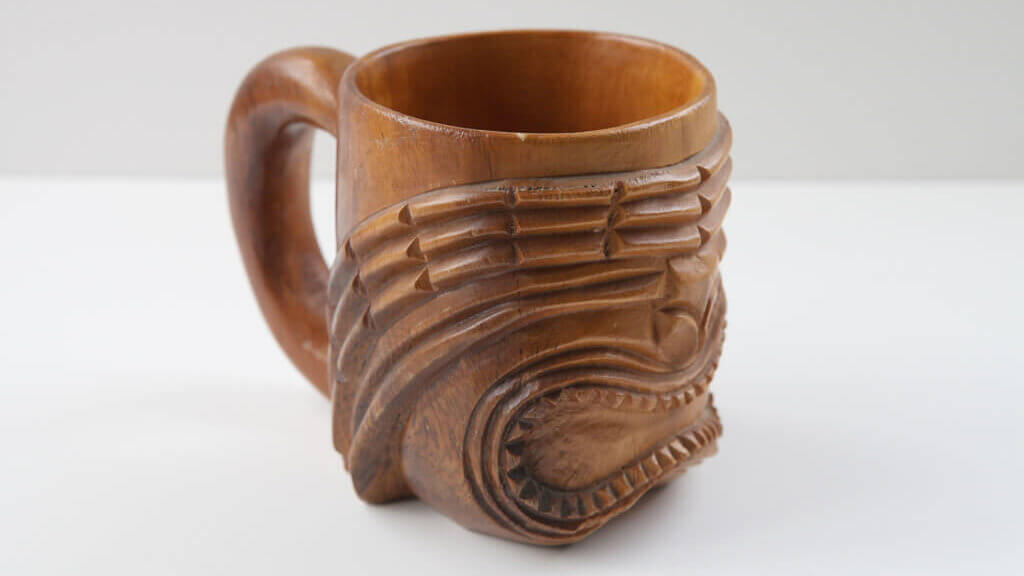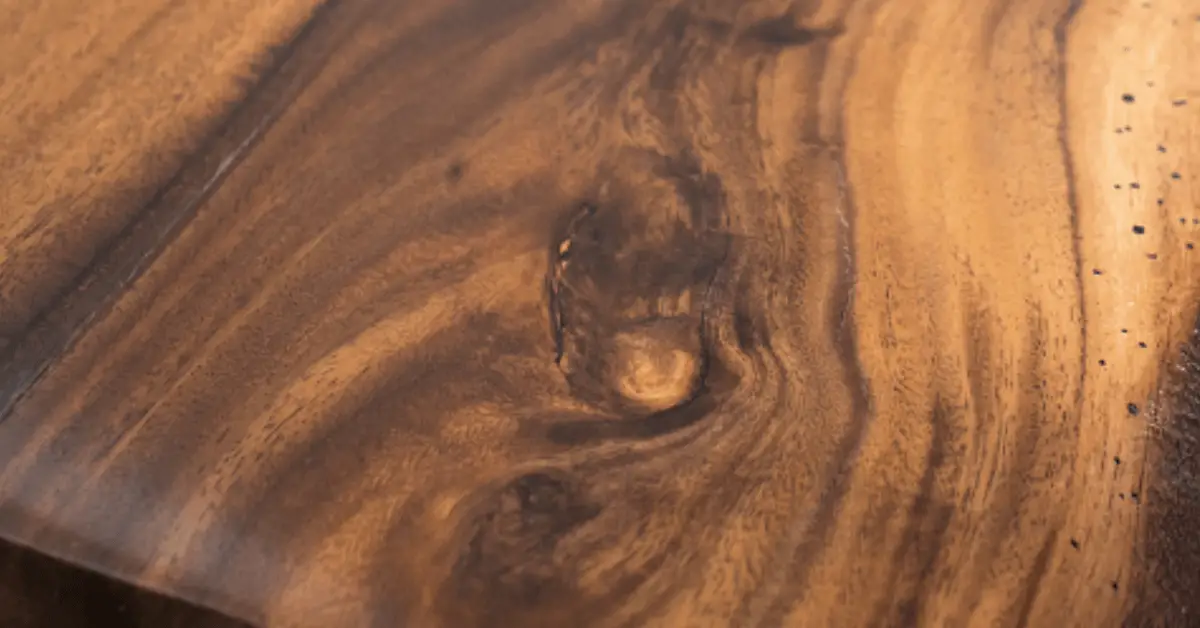What is Monkey Pod Wood?
The Monkey Pod (Albizia Saman) wood, also known as Monkeypod, Raintree, Suar, Rain Tree, and Mimosa, is native to Central and South America.
Monkey Pod is durable, strong, rot, and decay-resistant hardwood. It is a versatile wood that can be used for all types of indoor and outdoor applications.
Due to its dense interlocked grain, it does not absorb moisture, and these properties make it an ideal choice for outdoor use.
Monkeypod is a long-sized tree that is fast-growing tree that has been introduced to many tropical countries. It is a dense and attractive tree that is used as a shade tree or ornamental tree.
| # | Monkey Pod wood |
| Scientific name | Albizia saman (syn. Samanea saman, Pithecellobium saman) |
| Family | Fabaceae |
| Wood color | Golden to dark brown |
| Tree Height | 15–25 m (49–82 ft) tall, with, a 3-4 ft (1-1.2 m) trunk diameter |
| Workability | Easy to work with both hand and machine tools |
| Finishing | It glues and finishes well |
| Rot Resistant | Rot and decay resistance |
| Availability | Easily Available |
| Hardness | Medium |
| Shrinkage | Radial: 2.0%, Tangential: 3.4%, Volumetric: 6.0%, T/R Ratio: 1.7 |
| Type | Hardwood |
| Uses | Veneer, plywood, millwork/trim, carving, cabinetry, furniture, musical instruments, and decorative wood items |
Monkey Pod wood Uses
Monkey Pod is a durable hardwood with medium density; It is also resistant to most insect attacks. So, it is the best wood for making home furniture and cabinets.
It’s natural color and grain patterns always attract attention, and after finishing, it gives excellent results.
Monkey Pod wood is also used for veneer sheets, which are used to make durable and stable plywood.
Some music instrument makers believe that it produces a beautiful tone, so Monkey Pod is also used for making guitars and ukuleles.
Appearance and Grain

Generally, the color of Monkeypod wood can range from golden to dark brown with darker streaks. The sapwood is lighter in color than the heartwood and can be easily distinguished.
Monkeypod, like most hardwoods, darkens over time or when exposed to direct sunlight.
If we talk about the grain pattern of monkeypod wood, it is usually straight, but sometimes it can also be interlocked. The texture is medium to coarse, with medium to large open pores.
Is Monkeypod Hardwood or Softwood?
Monkeypod wood is considered a medium-density hardwood. Its Janka hardness value is 900 lbf (4,010 N), and its average dried weight is 38 lbs/ft3 (600 kg/m3). The Janka hardness value of monkeypod wood is approximately twice that of bald cypress (510 lbf (2,270 N)).
Here are the Janka hardness values of some popular wood species to give you an idea of how hard monkeypod wood is.
| Wood Species | Janka Hardness |
| Western Larch | 830 lbf (3,690 N) |
| Hackberry | 880 lbf (3,910 N) |
| Monkeypod | 900 lbf (4,010 N) |
| Honduran Mahogany | 900 lbf (4,010 N) |
| Paper Birch | 910 lbf (4,050 N) |
| White oak | 1,350 lbf (5,990 N) |
Working with Monkey Pod Wood?
Generally, the Monkey Pod wood is easy to work with both hand and power tools. But monkey pod wood has interlocked grain that is responsible for the fuzzy surface. It may be challenging during planning or machine operations. Overall, it glues and finishes well.
Working with hardwood is not always as easy as it is with softwood. When we work with hardwood, we face many challenges. Wood hardness and weight are one of the main reasons.
How to Finish Monkey Pod Wood?
Monkey Pod wood is very easy to finish. It accepts all types of stains and finishes well. The wood staining process enhances the beauty of the wood grain and preserves the beauty of the wood for a long time.
Some species of wood are really difficult to stain. Such as maple, birch, fir, and pine typically do not take well to stains.
We have to follow three easy steps.
1. Sand the floor
In the first step, sand the wood with medium-grit sandpaper (120 or 180 for the finest finish). Do this step well and carefully. Sanding is used for many purposes. As such, it opens the grain of the wood so that the stain can be set deeply, and the stain should be durable.
Another advantage of sanding is that it also removes dents and dirty stains from the surface of the wood so that the stain takes evenly.
2. Clean the Wood Surface
Before moving to the next step, clean the wood surface thoroughly with a wet cloth. Make sure that no dust and dents are left on the wood surface.
Do not use any chemical solution for cleaning; use only normal water, which will be better.
When you know that the wood has been thoroughly cleaned, allow the wood to dry thoroughly. Moisture on the wood can discolor your stain.
3. Apply the Stain
After the wood is completely dry, we are ready to apply the stain. A buffer or a clean cotton cloth can be used to apply the stain.
Before staining, wear proper gear, such as a mask to protect and hand gloves. Special precautions are required for sensitive skin patients.
Apply two coats of stain and keep a gap of 40 to 60 minutes in the first and last coat. Apply the stain in the direction of the grain so that the stain fills the grain gaps well.
The stain should be applied to the entire wood in equal quantity so that after finishing, the stain looks uniform.
After staining, allow the wood to dry thoroughly and perform the entire staining process in a dust-free place.
How to Clean Monkey Pod Wood?
Regular wood cleaning and care help maintain its natural quality for a long time. Some woods require less care and cleaning, while others require more.
Monkey Pod hardwood is generally easy to clean, but we must clean it carefully so that we do not spoil the natural color of the wood.
We will prepare a mixture of 4 cups of warm water and a few drops of Castile soap or dish soap. You can use a mop or scrub.
Do not use oil, wax, or furniture spray. This can spoil the color of your beautiful wood.
Do not rub the same spot again and again while cleaning. This may discolor your stain or damage the grain of the wood.
Is Monkey Pod Wood Expensive?
Monkey Pod wood prices can range from medium to high, depending on the quality of the wood. Monkey pods cost less than Koa but more than many other hardwoods.
The price of wood also depends on the native place of the wood, as you can get it cheap in the United States.
You can get huge discounts when you buy in bulk at the lumber market.
Where Does Monkey Pod Wood Come From?
Monkey Pod is native to Central and South America. It has spread from Mexico south to Peru and Brazil. Monkey pods have also been introduced to South and Southeast Asia.
The main reason for its rapid spread in Asia is that the soil and environment are suitable for Monkey Pod tree growth.
Is Monkey Pod Wood the Same as Acacia Wood?
Monkey Pod is frequently called acacia, but acacia is a different genus altogether. The physical properties of acacia wood are different from the Monkey Pod.
But we can compare the appearance of acacia wood with monkey pods. They are very close to each other in appearance.
Therefore, it isn’t easy to distinguish between acacia and monkey pod wood.
Is Monkey Pod Wood Good Firewood?
Monkey Pod wood is good firewood, but only when it is completely dry. It is a heavy hardwood that generates high heat during burning and burns for a long time.
Generally, hardwood has a high BTU value and burns cleanly, so it is a good choice for firewood.
A British thermal unit (Btu) is a measure of the heat content of fuels or energy sources.
Is Monkey Pod Wood Sustainable?
Monkey Pod tree grows very fast, which makes it a very sustainable hardwood. Its tree is a seed-bearing tree; birds and rodents naturally disseminate them.
Monkey Pod trees can grow to be 100–125 feet (30–38 m) tall and 3–4 feet (1–1.2 m) in trunk diameter. In this way, we can get a lot of wood from a single tree.

